TL/DR: Although I can’t blame Cathay Pacific for their new 10-abreast Economy seats, I had an awful experience, and I will be avoiding them like I do with all my school deadlines.
Hello from Hong Kong! I just came back from a short trip to Tokyo and had a fantastic time. This trip was especially noteworthy since it was my very first time flying on Cathay Pacific’s newly retrofitted regional Boeing 777-300 aircraft. In a bid to drive up profits, Cathay has begun rapidly retrofitting it’s Boeing 777 fleet with new “densified” Economy cabins, which squeeze in an extra seat per row. I wanted to book this flight to experience the new cabins myself to see if Cathay delivered on their promise to “ease the pain” of the reduced seat width in the new seats.
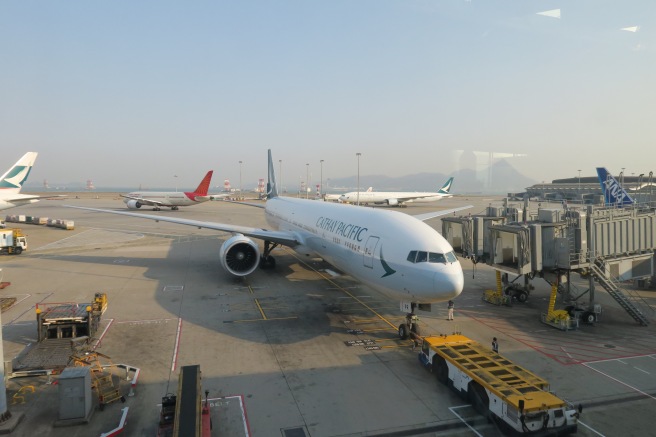 Cathay Pacific Boeing 777 Hong Kong Airport
Cathay Pacific Boeing 777 Hong Kong Airport
So, I finally flew the flight last Wednesday – and yeah, the experience wasn’t the best. Here are my first impressions:
I really don’t blame Cathay for this
Let me preface this post by saying that I completely understand the rationale behind this decision. On both of my flights on this trip, the aircraft went out full. These newly densified aircraft not only allow Cathay to maximise revenue on their flights but also enables them to offer more seats on “prime” flight services that are in high demand. At the end of the day, it’s a smart business decision that allows them to make more money, especially considering that Cathay Pacific has lost its premium brand image. This decision, while coming at the expense of customer satisfaction, allows the airline to remain competitive in the industry with its revenue per seat.
Less legroom on regional 777s
When Cathay Pacific initially announced their intention to go 10-abreast on their Boeing 777 aircraft, they promised that they would be keeping the current seat pitch. However, it appears that on regionally configured Boeing 777-300 aircraft (77P), Cathay sneakily shoved in an extra row to the centre section of the front Economy Class cabin between the second and third doors. Thankfully, the reduction in pitch isn’t extended to long-haul aircraft. While I didn’t sit in this section for the flight, I had the chance to try out one of the seats briefly, and the legroom was noticeably tighter.
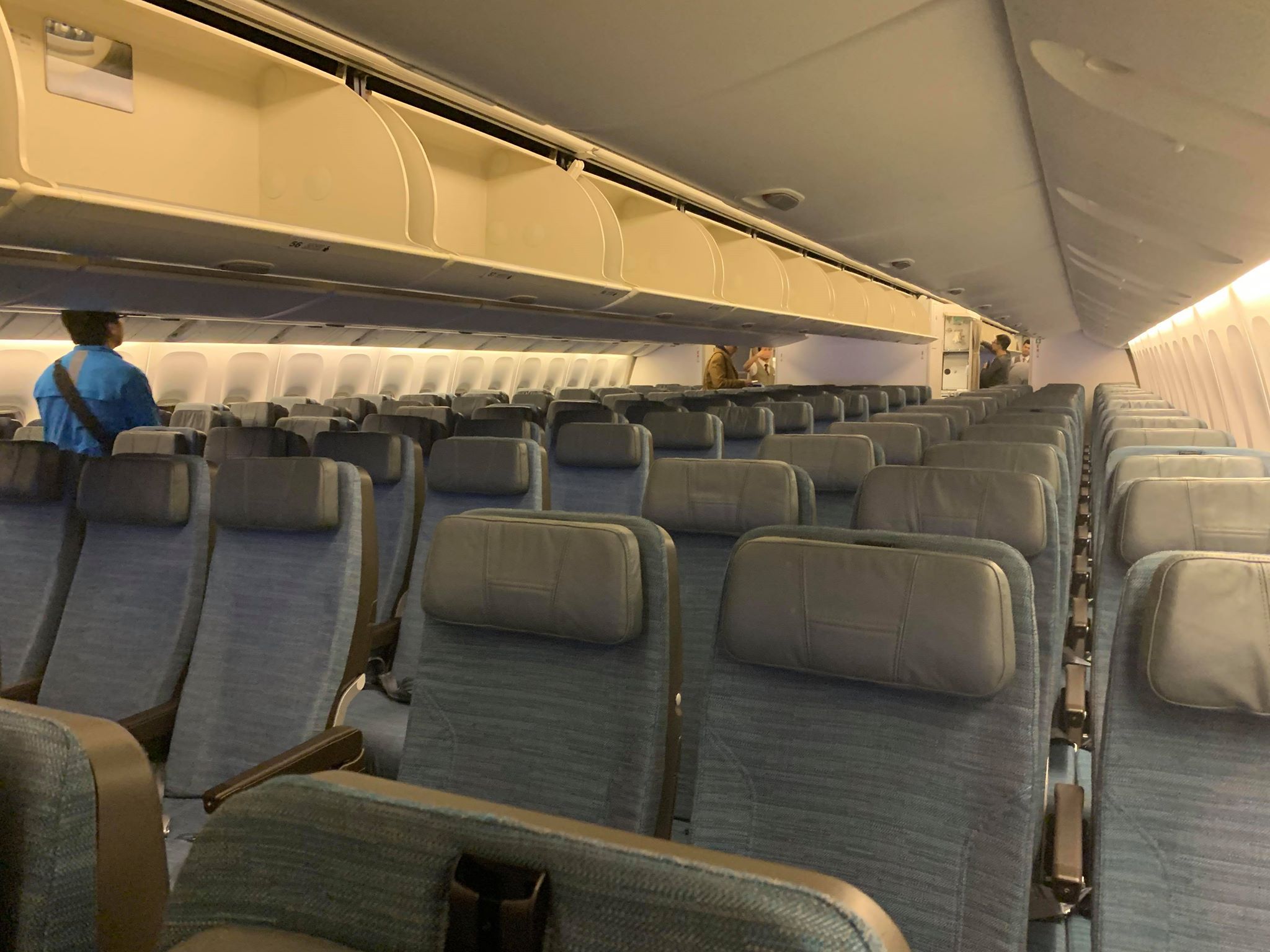 Cathay Pacific Boeing 777 10-Abreast Economy Front Cabin
Cathay Pacific Boeing 777 10-Abreast Economy Front Cabin
This reduction in pitch is especially disappointing considering the promises initially made by management when the retrofit project was announced. This also marks a dangerous precedent for Cathay Pacific and begs the question of whether or not more regionally configured aircraft are going to feature reduced legroom in the future.
The seats are bad, but not too horrible
As much as I understand the rationale for making this change, the new seats are seriously narrow. These new seats made the old 9-abreast configured seats feel like thrones in comparison, and are noticeably tighter than any other airline seat I’ve ever flown. Heck, these seats are even narrower than those on many narrow-bodied regional aircraft.
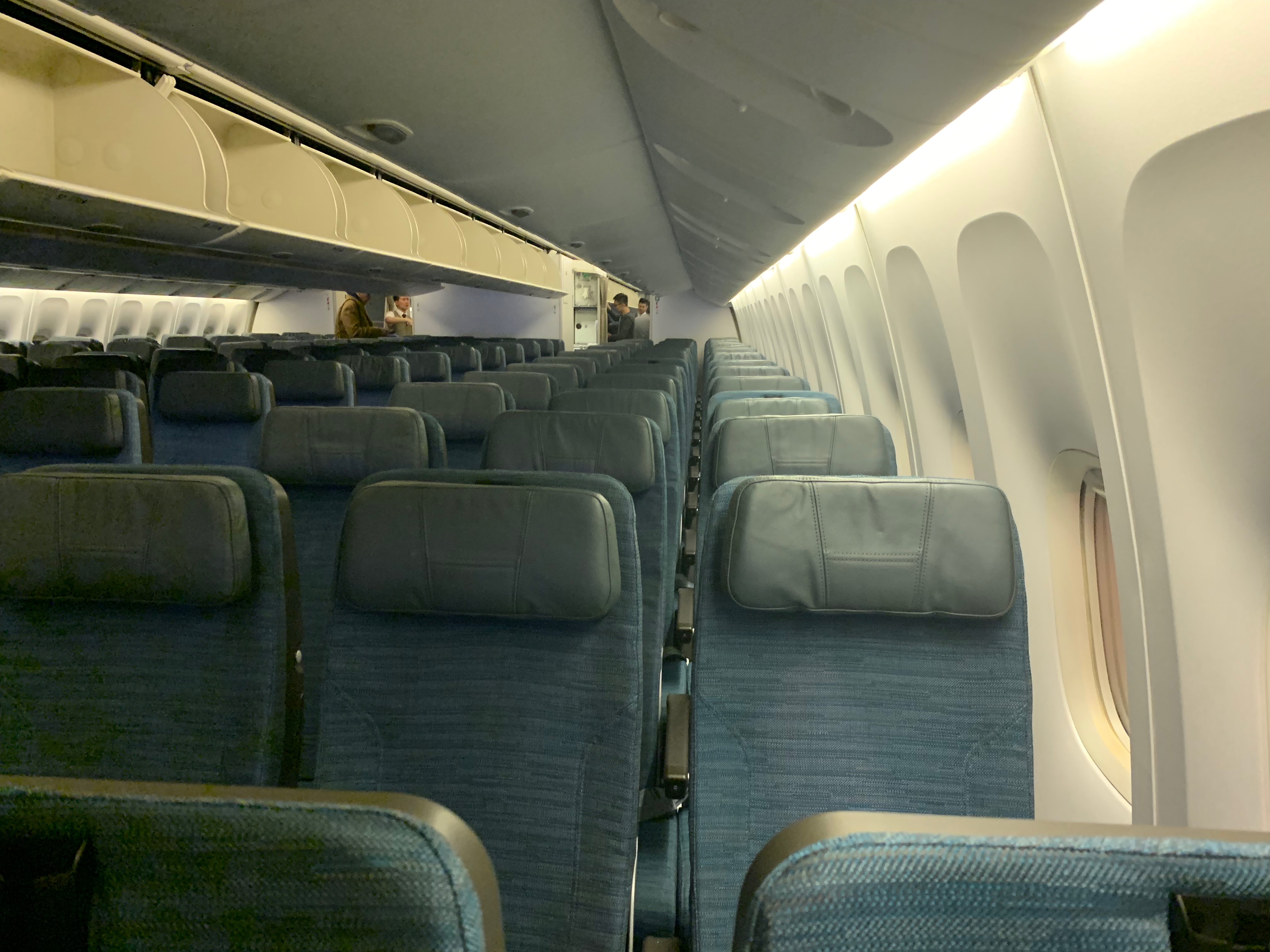 Cathay Pacific Boeing 777 10-Abreast Economy Class Cabin
Cathay Pacific Boeing 777 10-Abreast Economy Class Cabin
The reduced width was made worse by the fact that I was in an exit row seat. While I have nothing to complain about the legroom my seat offered, this also meant that the tray table and personal television needed to be stored in the armrest, calling for a significantly thicker armrest.
Cathay also decided to install entertainment controllers in the first row of seats even though the televisions are enabled with touchscreen capabilities. These entertainment handsets further add to the width of the armrest, making the seat feel even more narrow. I would think twice before picking a bulkhead seat in Cathay Pacific’s (or any airline’s) 10-abreast configuration. Even my mother, who’s flown her fair share of longhaul economy class flights in the past, found the seat to be tight and uncomfortable.
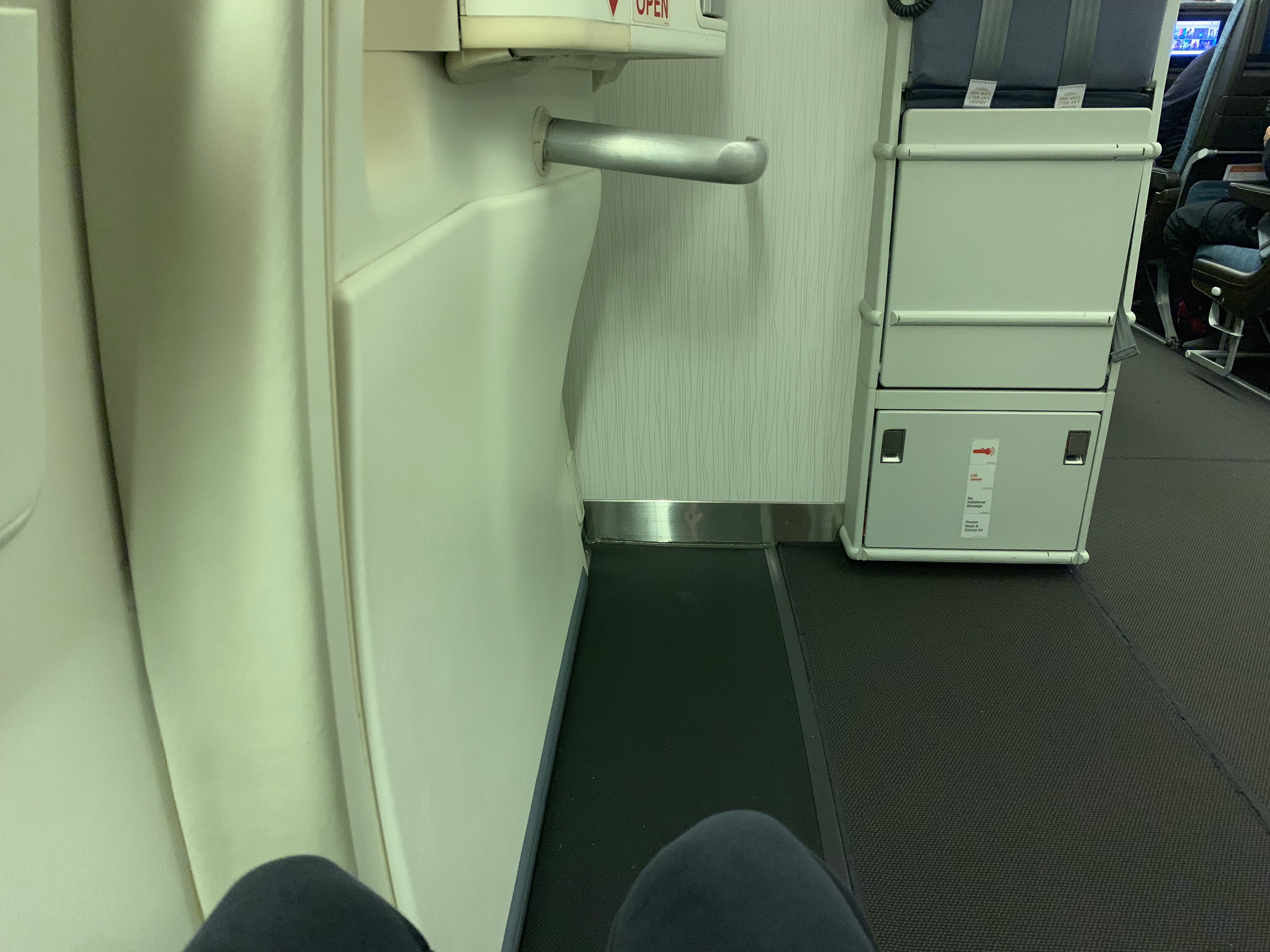 Cathay Pacific Boeing 777 10-Abreast Exit Row Legroom
Cathay Pacific Boeing 777 10-Abreast Exit Row Legroom
With the limited seat width aside, the hard product is decent enough. The seat padding was substantial and “sculpted” on the sides of the seatback, which provided sufficient back support. While not as well-padded as Cathay’s former Economy seats or their new Economy Class seats on the A350-1000, I don’t have any complaints. Each seat also features a pull-down cup-holder and tablet stand, behind which is a small storage nook. On bulkhead seats, the tablet holder is integrated into the tray table, which I appreciated.
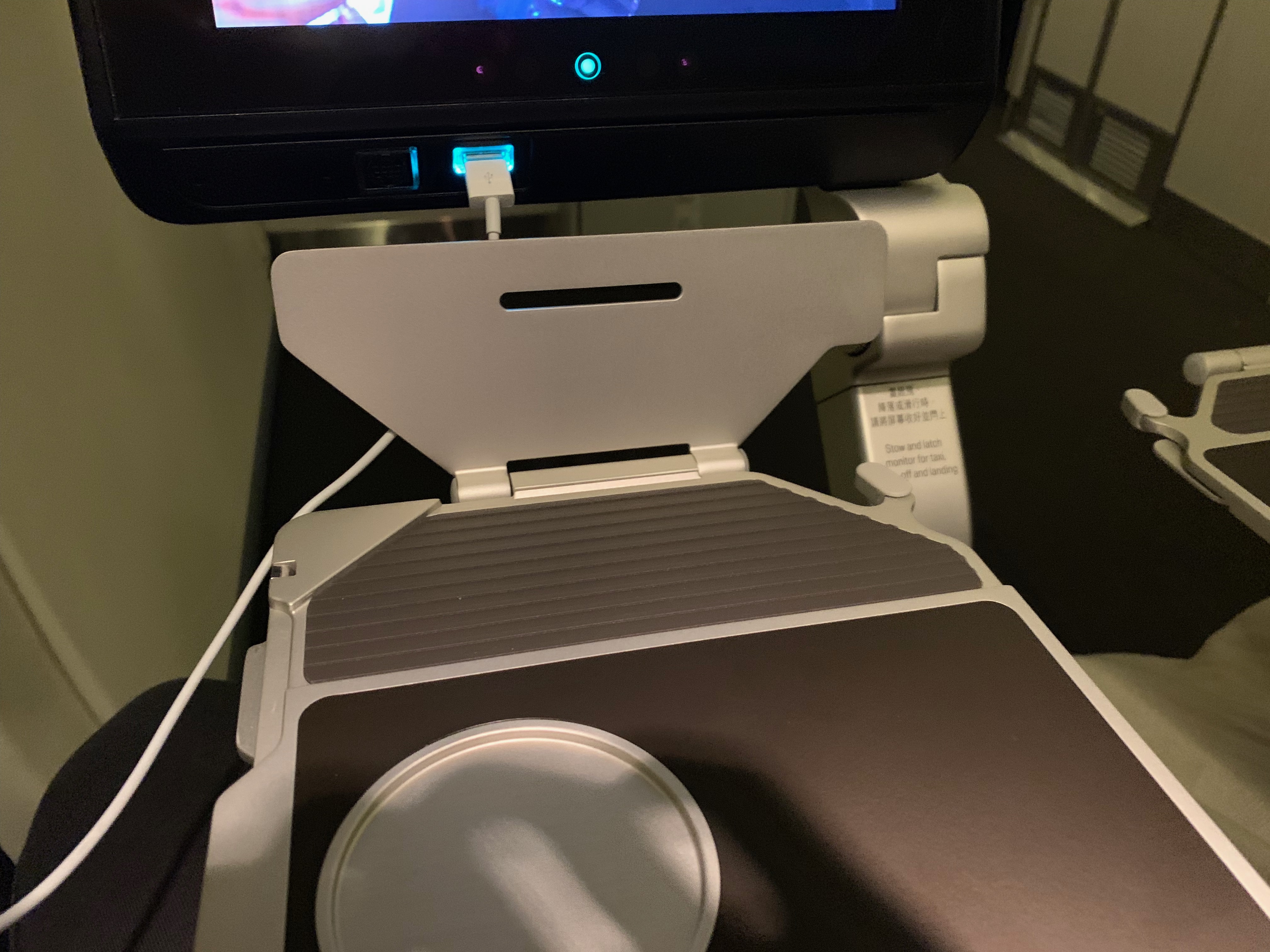 Cathay Pacific Boeing 777 10-Abreast Economy Class First Row Tablet Holder
Cathay Pacific Boeing 777 10-Abreast Economy Class First Row Tablet Holder
My only gripe about the seat design (width aside, obviously) is the adjustable headrest, which was flimsy and didn’t provide much head and neck support, at least in my experience. This is especially disappointing, considering the innovative headrests that we’ve seen come out of Cathay’s seat department.
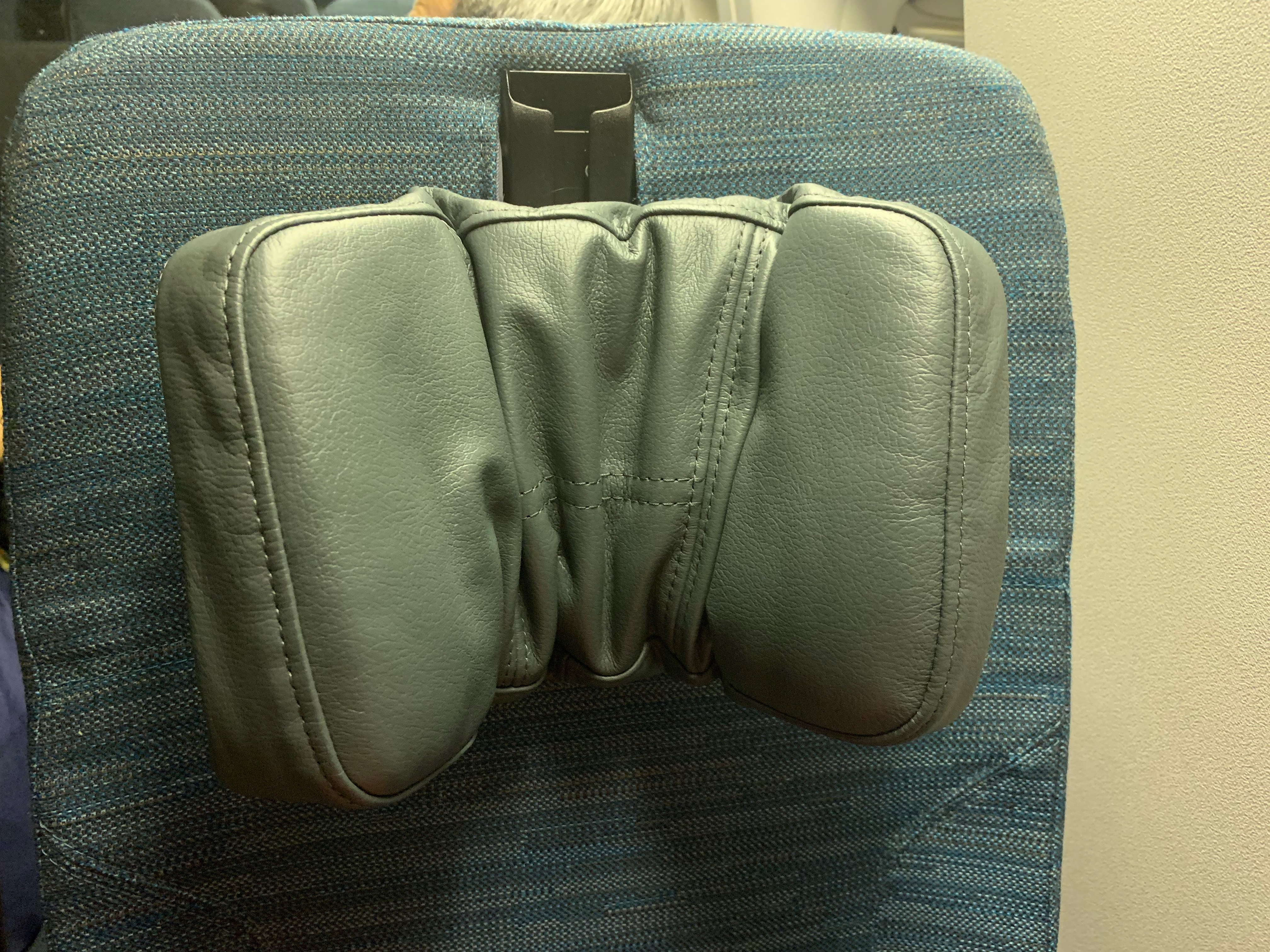 Cathay Pacific Boeing 777 10-Abreast Economy Class Headrest
Cathay Pacific Boeing 777 10-Abreast Economy Class Headrest
While Cathay’s long-haul and regionally configured Boeing 777 aircraft all feature the same “base” Recaro seat in Economy, there are some differences between the long-haul and regional version.
First, the long-haul seat features a larger, higher resolution television screen with the latest generation touchscreen technology, while the regional seat is stuck with a smaller, 9-inch display with lower resolution and last-generation touchscreen technology. While this may seem like a minute distinction, a larger and higher-resolution screen can make a massive difference in the passenger experience.
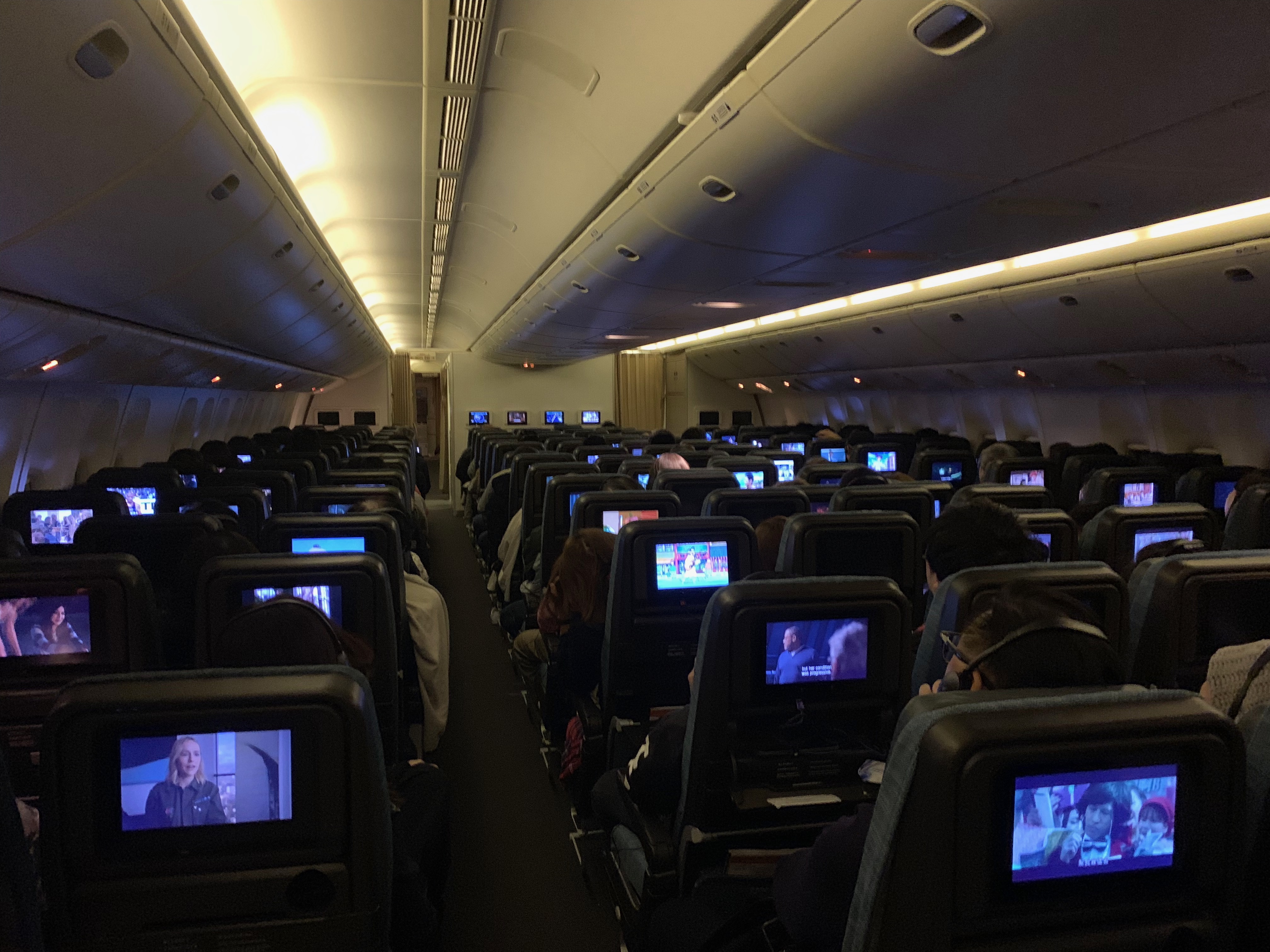 Cathay Pacific Boeing 777 10-Abreast Economy Class Screens
Cathay Pacific Boeing 777 10-Abreast Economy Class Screens
Also, the long-haul seat should have an additional neck “clip” which provides extra support, which hopefully gives the headrest a bit of weight and makes it less flimsy. While regional aircraft fly shorter routes and therefore don’t call for as many bells and whistles as a long-haul aircraft, they are significantly more competitive than most long-haul routes. It disappoints me that Cathay decided to fit the regional aircraft with an inferior product both regarding the seat and personal space, especially considering the reduced space in the densified seats.
Let’s talk service flow
The new service flow can best be described by the following interaction between the flight attendant serving my section during boarding and me:
Me (Playing Dumb): Are these the new seats?
Flight Attendant: *forced smile* Well… Sort of…
The service was slow. Cathay Pacific decided to not add any flight attendants in spite of the densification and instead described the new service flow as a more “even distribution of work” for their cabin crews.
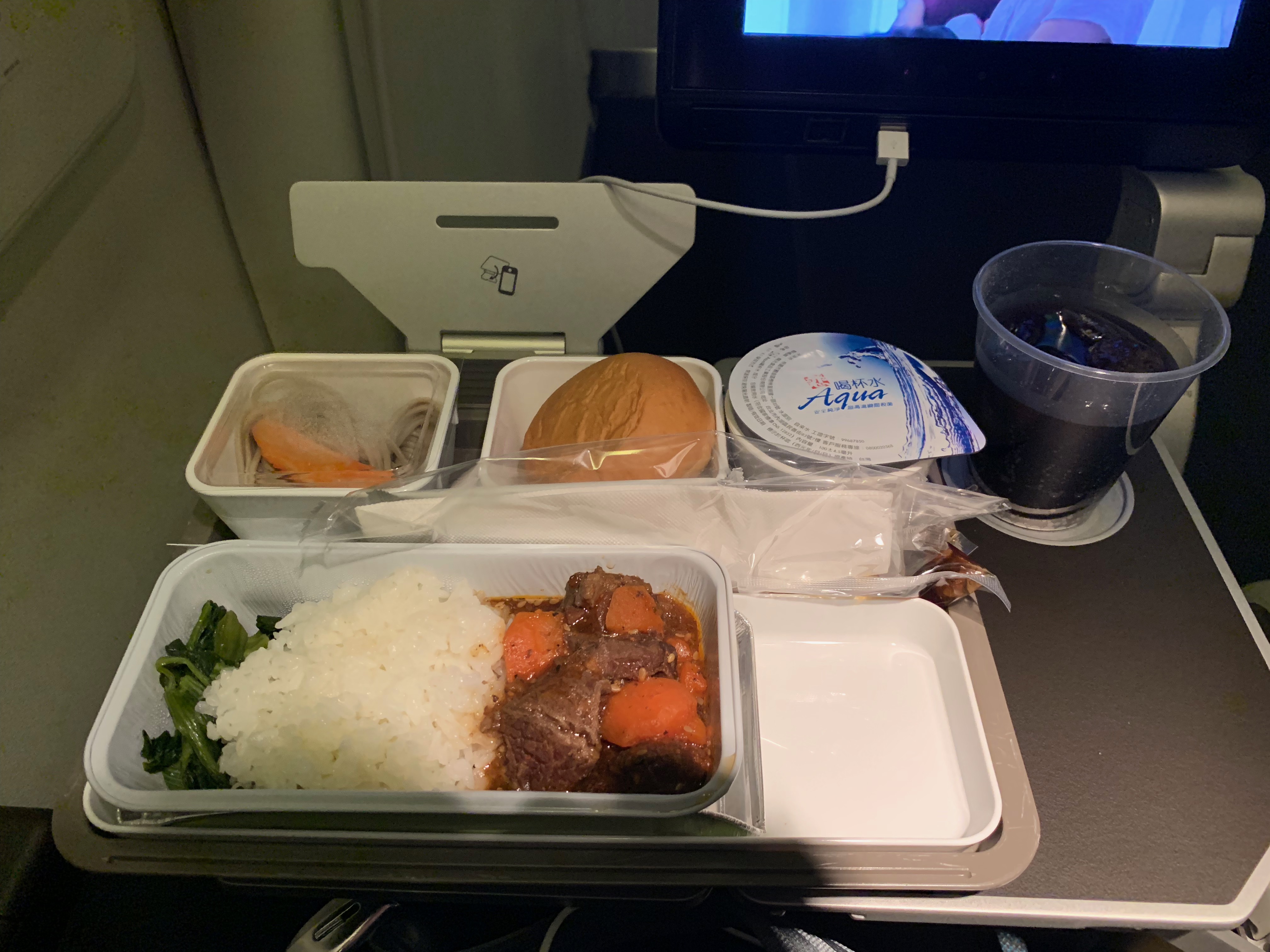 Cathay Pacific Boeing 777 Economy Class Dinner
Cathay Pacific Boeing 777 Economy Class Dinner
The meal service on my return flight on the densified aircraft took between two to three hours to complete, compared to the one hour that it took for the crew on the non-densified plane that I flew on the outbound. The decision not to add crew members is weird, especially considering that Cathay had previously emphasised on offering quick Economy meal services to allow passengers to spend more time resting during the flight. Add this to a new labour-intensive and time-consuming Business Class meal service (don’t even get me started on that), and shorter layovers, and I can’t imagine the level of fatigue that Cathay cabin crews will be experiencing in the future.
Bottom Line: Cathay Pacific’s 10-Abreast Economy Class
Once again, I understand why Cathay decided to densify their cabins. It’s a smart business decision, and I can’t fault them for that. However, the way that they have implemented this is, unfortunately (but not surprisingly), quite disappointing. First, it pisses me off that they’re reducing legroom on regional aircraft, despite promising not to do so. Next, it’s stupid to outfit regional aircraft with crappier technology, considering the competition and already-reduced space in the new seats. Finally, it blows my mind that they haven’t added any flight attendants despite the significant increase in seat count in many of these aircraft.
I really don’t think management did quite enough to “ease the pain” of the densified seats. While the seat retains many of Cathay’s signature Economy Class features, they aren’t honestly anything better than what is being offered on the rest of the fleet – which still maintain 18 inches of seat width across the board. You bet that I’m going to be avoiding these seats as much as possible in my future travels.
Have you flown Cathay’s narrower Economy seats? What was your experience like?


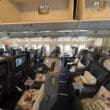
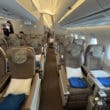

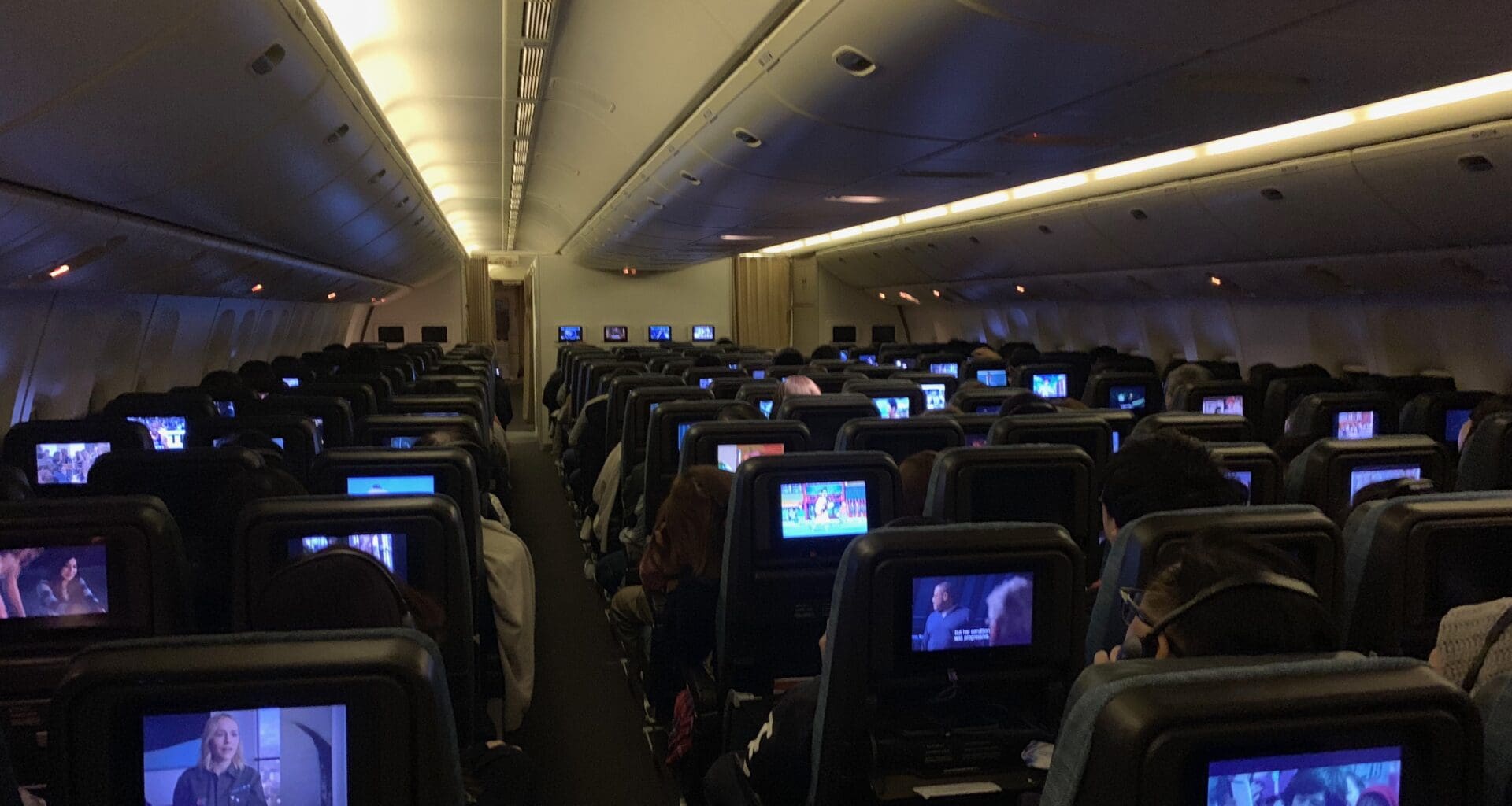
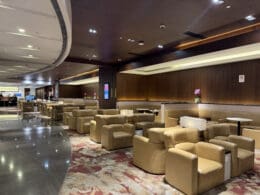
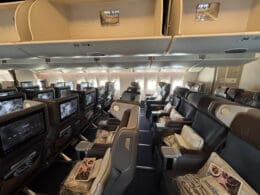
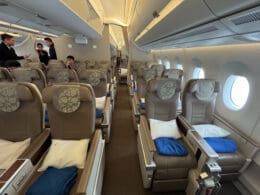
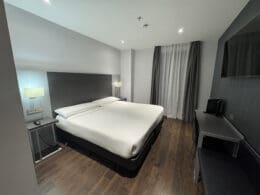
Great info! Thank you! I too will be avoiding these planes
I flew Cathay last October round trip between Vancouver and Hong Kong. I will never fly Cathay again. The reason, horribly narrow and uncomfortable seat. The seat was so narrow that I could not even see the controls of the overhead light which were on the side of the armrest while sitting down. I am only 150 lbs and flew Cathay before. They were enjoyable flights but not the last trip. Bye Cathay, your densified cabin just drove away a loyal customer.
I personally haven’t flown Cathay’s 10 abreast economy seat but reading from reviews and specifications of the seat, I would say it is very comparable to Qatar’s 787 and 10 abreast 777s and BA’s 9 abreat 777 as well as NH and BR.
Having flown on Qatar’s 787 and 10 abreast 777, I must say, they were both the worst flight I’ve ever been on, most especially on their 787s. There was barely any shoulder width. I have a medium built 5’7 but with fairly broad shoulders and the tip of my shoulder and my partners were touching. BA’s 9 abreast B777s aren’t any better with just 31 inch pitch.
I have read horrible reviews of NHs tight economy seats too with some saying the seat width is less than 17 inches with only 31 inches pitch.
So I say, I think CX still have a competitive Y product.